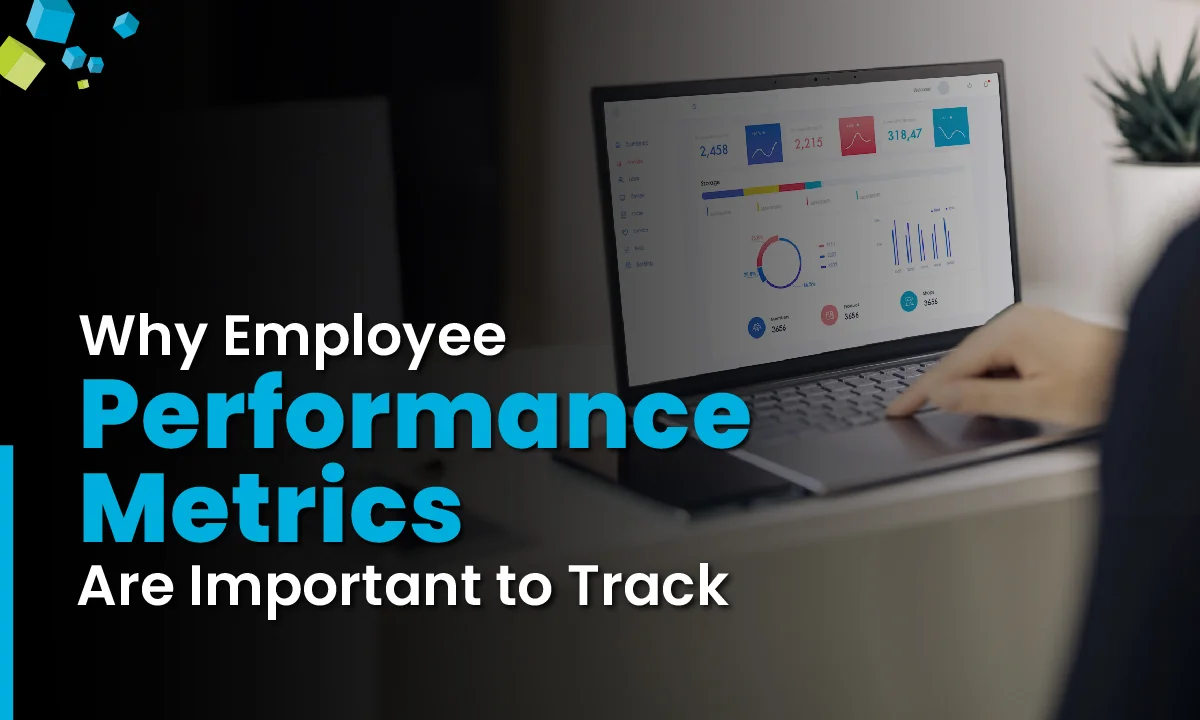Employee performance metrics provide a clear, quantifiable way to evaluate how effectively your employees are contributing to the company’s goals. By tracking these metrics, you can identify areas for improvement, reward high performers, and make informed decisions about training and development.
This blog will explore the importance of tracking employee performance metrics and how they can help enhance productivity, foster growth and ensure a thriving workplace.
What are performance metrics?
Performance metrics are measurable indicators used to assess a person, group, or organization’s effectiveness, efficiency, and overall performance. These metrics offer unbiased information that enables your managers and team members to assess how effectively they are accomplishing your objectives and identify areas for development.
Metrics can be used to measure various aspects of employee performance, including collaboration, productivity, quality of work and timeliness. You can ensure you are on the right path to accomplishing strategic goals by methodically monitoring these indicators. This approach helps in promoting a culture of continuous improvement.
Understanding key performance indicators (KPIs)
KPIs are quantifiable, precise measurements that you can use to monitor your progress toward a given objective. These objectives can have to do with output, effectiveness, customer satisfaction, or any other aspect that makes the business successful. KPIs can also change based on the industry, size of the business and objectives.
For instance, KPIs for the sales team can include revenue earned, new lead generation, and conversion rate. On the other hand, response time, first-call resolution rate, and customer satisfaction score could be the key performance indicators for a customer support team.
Metrics measuring employee performance must always be regarded as crucial KPIs.
Critical key employee performance metrics
A range of important indicators that offer insights into many facets of an individual’s or team’s work are included in an effective employee performance measurement process. Let’s take a deeper look at the essential performance metrics for employees to monitor:
- Task completion rate: Measures the percentage of completed tasks against the total assigned. It reflects productivity, time management and job alignment. A high rate indicates good performance, but 100% shouldn’t be the only measure of satisfactory output.
- Quality of work: Evaluates the accuracy and excellence of output. Managers should use standardized rubrics to assess and ensure fairness.
- Timeliness and punctuality: Tracks adherence to schedules and deadlines. Important for remote teams, this metric ensures consistent communication and engagement.
- Availability and online presence: Measures responsiveness and online activity. Essential for team collaboration and overall operation efficiency. Tools such as Team GPS can help monitor this.
- Initiative and proactiveness: Assesses the ability to go beyond assigned tasks and suggest improvements. Includes self-assessments and evaluations from peers and managers.
- Feedback and collaboration: Evaluates openness to giving and receiving feedback and fostering a positive, collaborative environment. Requires team surveys, peer reviews, and communication tool assessments.
- Learning and development: Encourages holistic growth through courses and certifications. Managers should help identify skills for improvement and celebrate achievements.
- Project efficiency: Focuses on resource, time and task management in achieving project goals. Managers should evaluate timelines, resource use and adaptability.
- Task delegation and leadership: Measures the effectiveness of delegating tasks and leadership potential. Helps identify readiness for management roles.
- Absenteeism: Tracks attendance and engagement. High absenteeism indicates potential disengagement or morale issues and can threaten organizational productivity.
Tips on implementing an effective performance metrics system
A well-designed performance measuring system increases output and offers insightful data that helps with decision-making. We have put up an extensive list of best practices for setting up a successful performance measurement system to assist you in navigating this process as efficiently as possible.
- Set clear objectives: Define specific goals for your performance measurement system. Clear aims will guide the implementation process and ensure alignment with your MSP’s objectives.
- Invest in technology: Utilize advanced workforce management software to streamline data collection, analysis and reporting. Modernizing your tech stack enhances accuracy and efficiency, saving both time and money.
- Establish baselines: Measure current performance to establish a baseline. This provides a starting point for tracking progress and identifying areas for improvement.
- Regular data collection: Implement a consistent schedule for data collection and reporting. Regular updates ensure data accuracy and provide up-to-date insights.
- Customize reporting: Tailor reports to meet the needs of different stakeholders. You can require high-level summaries, while department heads need detailed data for decision-making.
- Performance reviews: Integrate performance measurement into regular reviews. Discuss results, set goals and develop improvement strategies during one-on-one meetings.
- Transparency: Maintain transparency about the performance measurement process. Clearly communicate to employees why and how their performance is being evaluated.
- Align with company culture: Ensure your performance measurement system reflects your values and culture, fostering a sense of alignment and purpose among your team.
- Benchmarking: Compare your performance against industry benchmarks. Identify areas for excellence and those needing improvement to stay competitive in the MSP market.
- Recognize success stories: Highlight and celebrate performance improvement success stories. Recognizing achievements motivates employees and reinforces a culture of continuous improvement.
- Scalability: Design a performance measurement system that can scale your growth and evolving needs. Flexibility ensures the system remains effective as your business expands.
How Team GPS helps you build and track employee performance effortlessly
Team GPS is a platform designed to empower MSPs like you in building and tracking employee performance effortlessly, all within a single pane of glass.
- Unified KPI Data: Team GPS consolidates all KPI data into a single, easy-to-view interface for a comprehensive employee performance overview.
- Customizable Tracking: Offers customizable KPI tracking to align with specific business goals and objectives.
- Versatile Monitoring: Enables monitoring of diverse metrics such as customer satisfaction, SLAs and revenue growth.
- Enhanced Flexibility: Provides the flexibility to track and analyze the most relevant metrics for your MSP.
- Streamlined Analysis: Facilitates quick and efficient analysis of key performance indicators.
Schedule a call today to know how Team GPS can change your approach to performance management for good.








